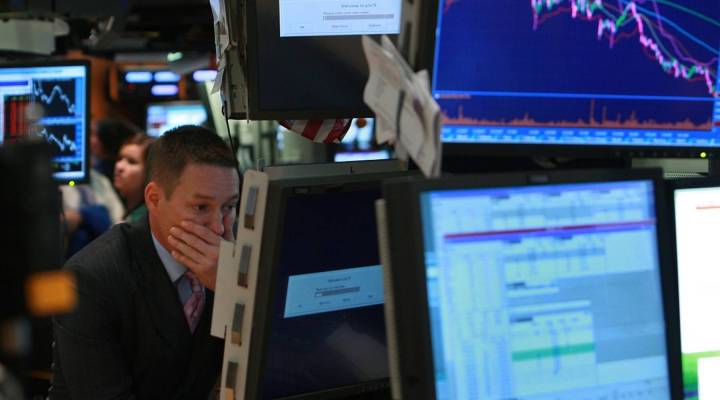
A history of U.S. recessions
Share Now on:
A history of U.S. recessions

Headline after headline suggests we might have to face another recession in 2019.
Labor shortages are developing, wages are rising and the Federal Reserve is trying to slow down economic growth.
But while recessions can lead to major upheavals for many Americans, experts say that it won’t be as devastating as the Great Recession.
“That was cataclysmic — a near-death for the financial system,” Moody’s chief economist Mark Zandi told us. “This is likely to be much more typical kind of economic downturn.”
The National Bureau of Economic Research defines a recession as a “significant decline in economic activity spread across the economy, lasting more than a few months, normally visible in real GDP, real income, employment, industrial production, and wholesale-retail sales.”
A recession does not always include,as some technical definitions state, the occurrence of negative GDP growth for two consecutive quarters.
Since 1854, there have been 33 recessions, according to data from the NBER. Each has lasted, on average, for about 17.5 months.
Turmoil in the 19th century
The NBER’s first recorded recession is the period from 1857-58. It started when the New York branch of the Ohio Life Insurance and Trust Company failed.
“It was soon reported that the entire capital of the Trust’s home office had been embezzled,” wrote the Library of Congress. “Almost immediately, New York bankers put severe restrictions on even the most routine transactions.”
Stockholders then ran to their brokers to make deals.
An 1857 September issue of Harper’s Weekly said “prominent stocks fell 8 or 10 percent in a day, and fortunes were made and lost between ten o’clock in the morning and four of the afternoon.”
Other problems that increased panic during the time included the British withdrawal of capital from U.S. banks, railroad defaults on debt, and a fall in grain prices.
But this doesn’t mean this was the “first-ever” recession in the country’s history — the NBER’s list partly has to do with the availability of data that is broadly comparable to the data available in the 20th century, according to James Poterba, the president of the NBER.
Before 1857, you’ll see there was a financial crisis in 1837, said Peter Temin, an economics professor at MIT.
The cotton industry drove banks to lend money to land prospectors which eventually created a land bubble that went bust.
“There was a rather depressed period in the early 1840s that lasted a while,” Temin said.
Poterba said the further you go back in time, the spottier the data.
“When the economy was mostly agrarian, the weather and crop conditions were key drivers of overall economic activity. In poor harvest years, the economy was much weaker than in strong years,” he added.
Mark Zandi, chief economist at Moody’s Analytics, points out that it’s easier to measure economic activity in factories than on various different farms.
“We’ve had recessions since the beginning of the nation — major financial crises and events right from the start,” Zandi said. “I mean, one reason why the First Bank of the United States was formed was to try to smooth out some of the financial crises that were plaguing our early economy.”
There are economists who consider the first-recorded recession to be in the Book of Genesis, said Laurence Ball, an economics professor and department chair at Johns Hopkins University.
“There are the seven years of plentitude and then the seven years of famine,” he added. “So that was maybe the first recession.”
The recession alphabet
Prior to World War II, Zandi said recessions tended to be more “V-shaped”: a steep economic decline followed by a strong recovery.
“You had lots of liquidity, lots of bank notes, and all of a sudden, no bank notes,” Zandi said. “There was a run on the banks and that was like the floor fell out.”
To avoid these crises, the government needed a lender of last resort. Enter the Federal Reserve, established in 1913.
Nowadays, Zandi noted that recessions tend be more U-shaped: economic decline is slower, but it takes longer to turn things around.
There’s a lot happening in the world. Through it all, Marketplace is here for you.
You rely on Marketplace to break down the world’s events and tell you how it affects you in a fact-based, approachable way. We rely on your financial support to keep making that possible.
Your donation today powers the independent journalism that you rely on. For just $5/month, you can help sustain Marketplace so we can keep reporting on the things that matter to you.












